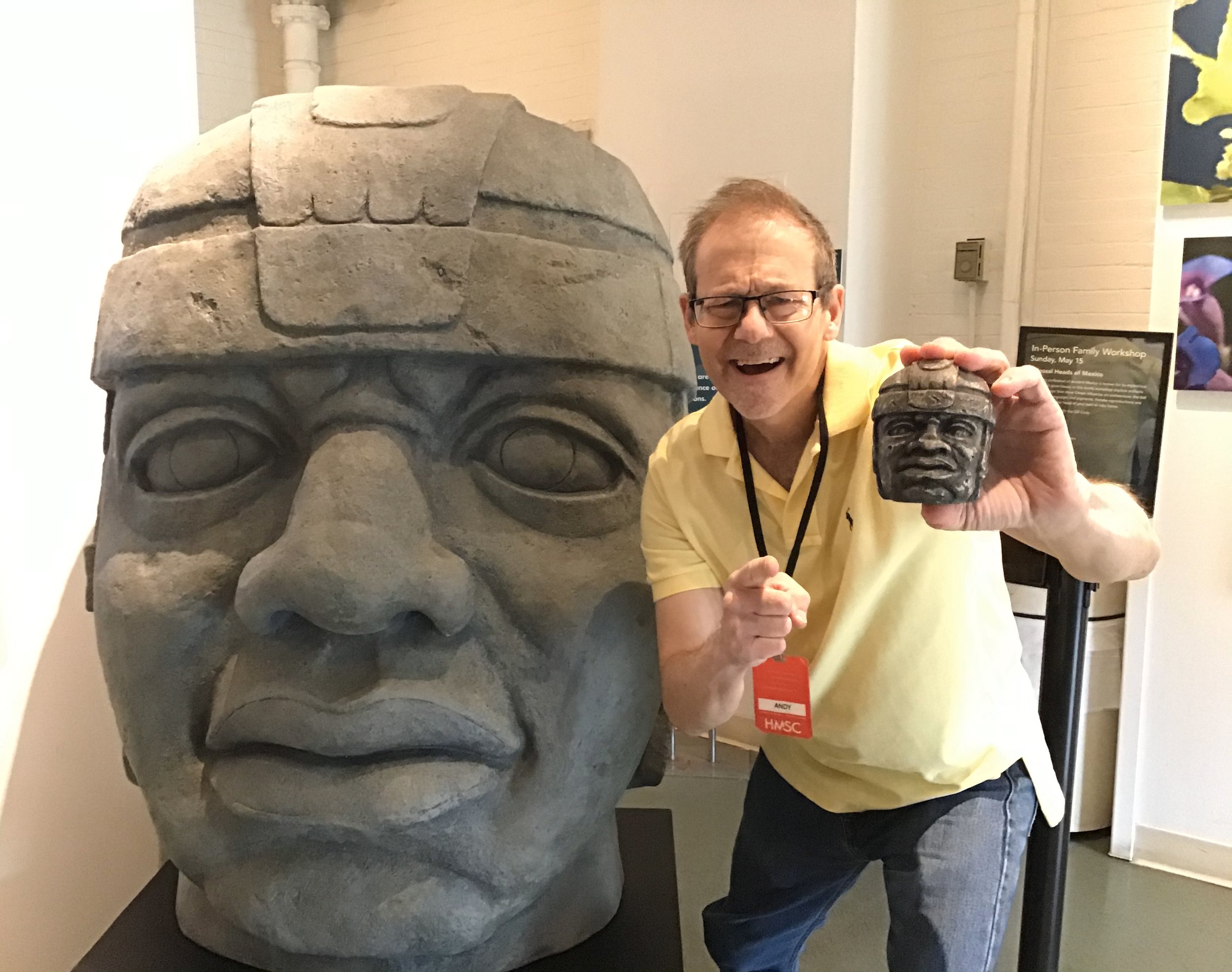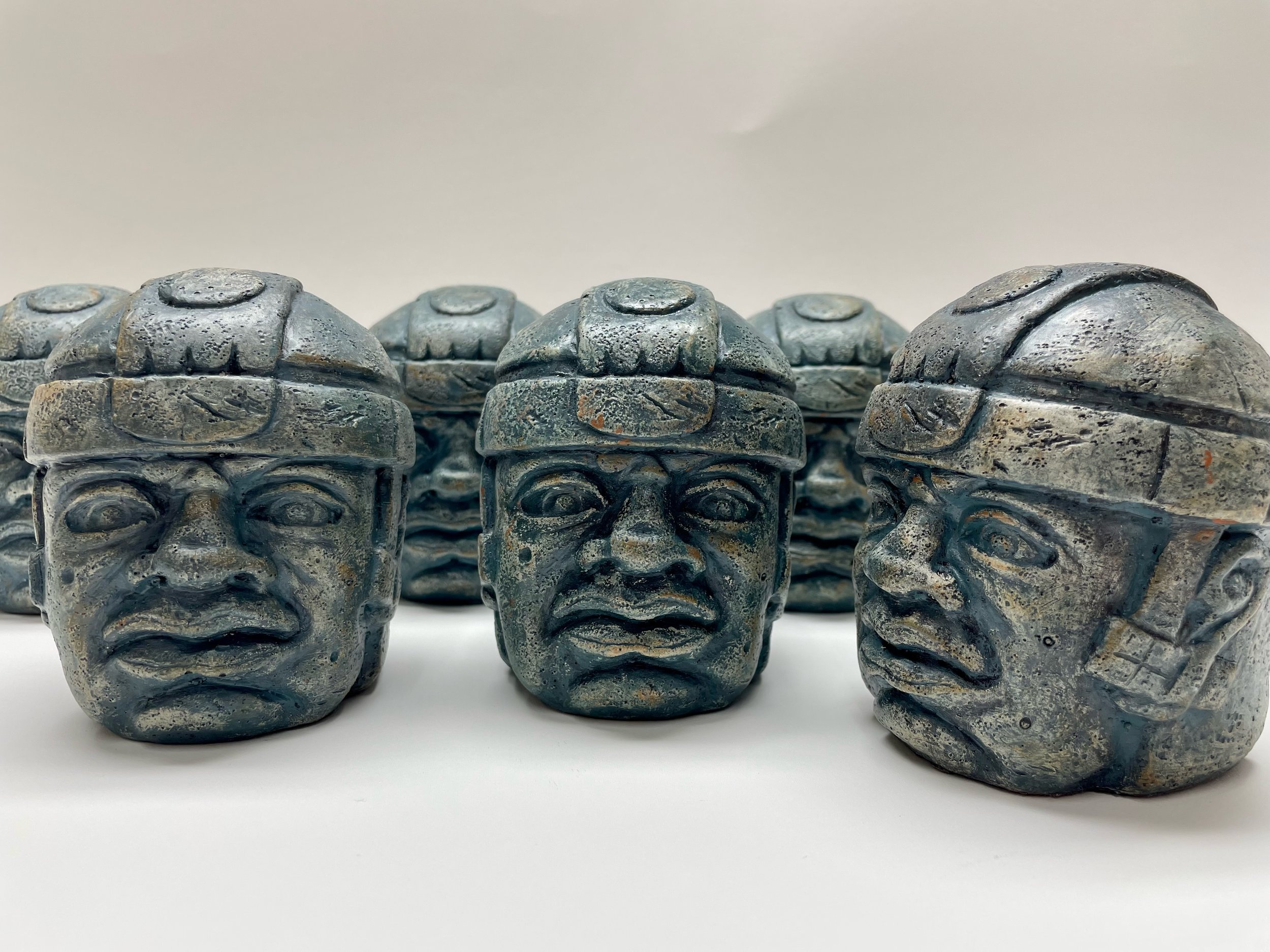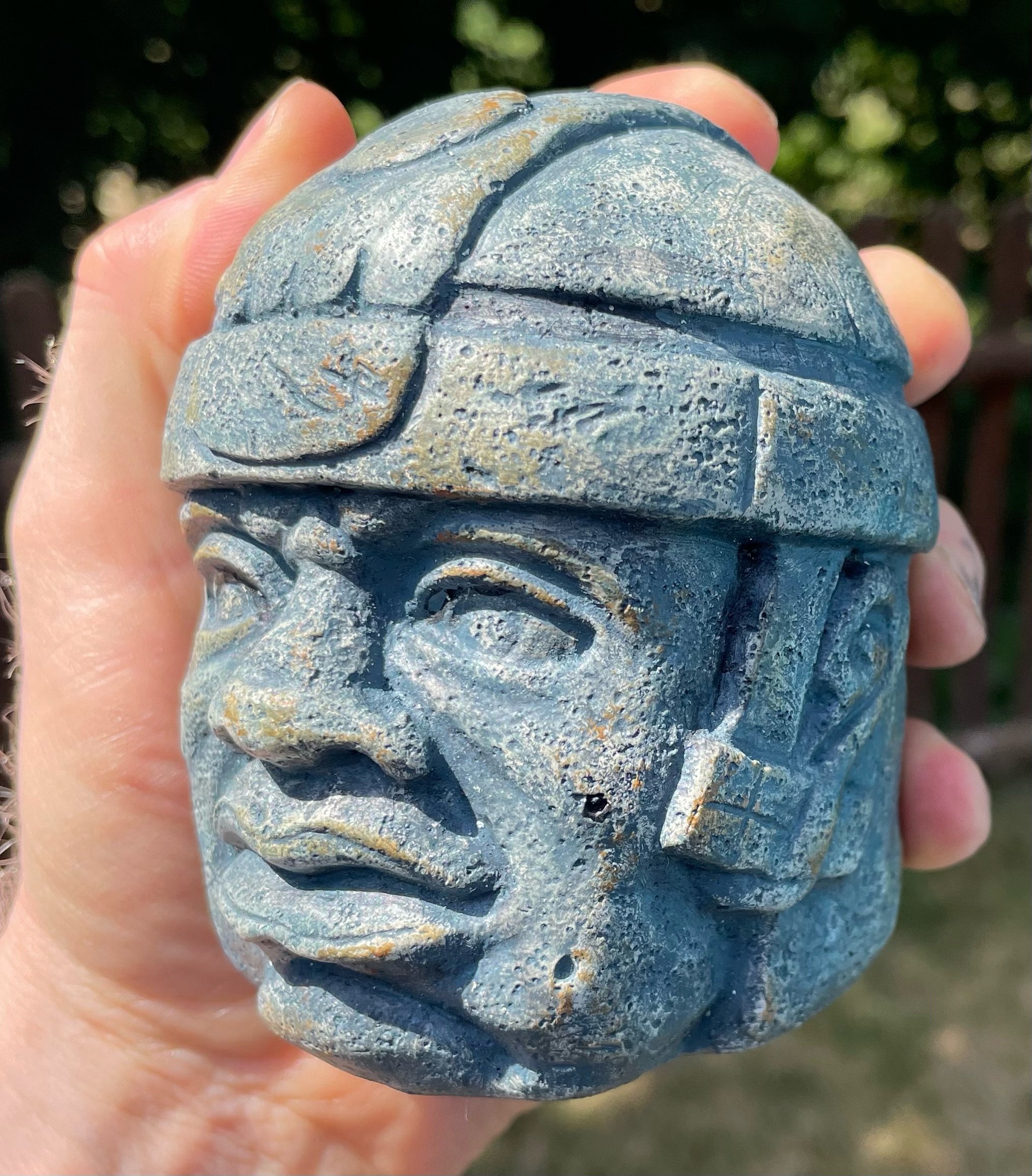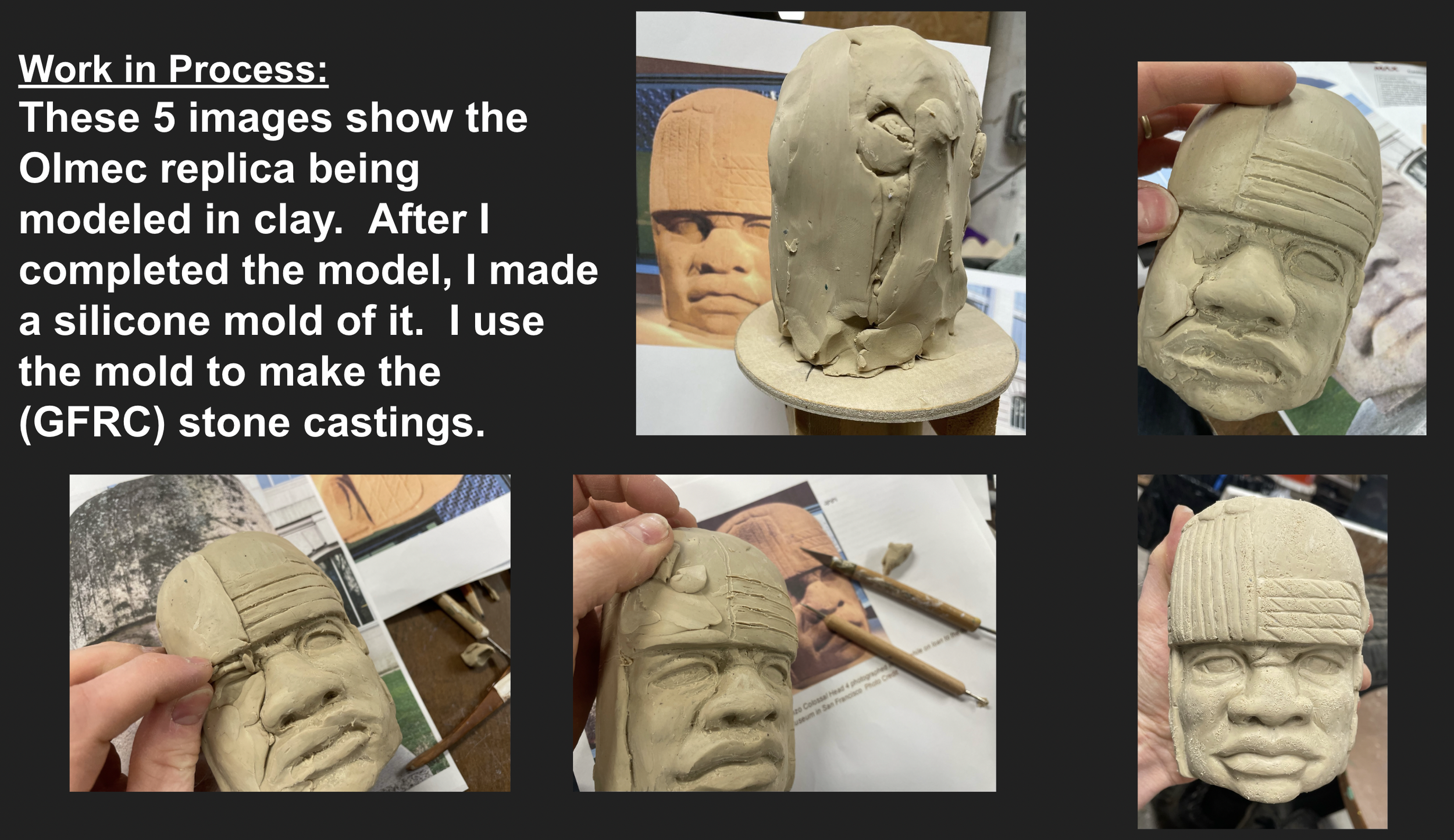For this project a scaled down replica was created of the colossal Olmec head
approximately size: 36” (L) x 31” (W) x 52” (H)
Monument 1: “The King”
Date: 1,200 to 900 B.C.E. Size 9’-6” high and 6’-10” wide. Current location, Museo de Antropologia de Xalapa in Xalapa, Veracruz, Mexico
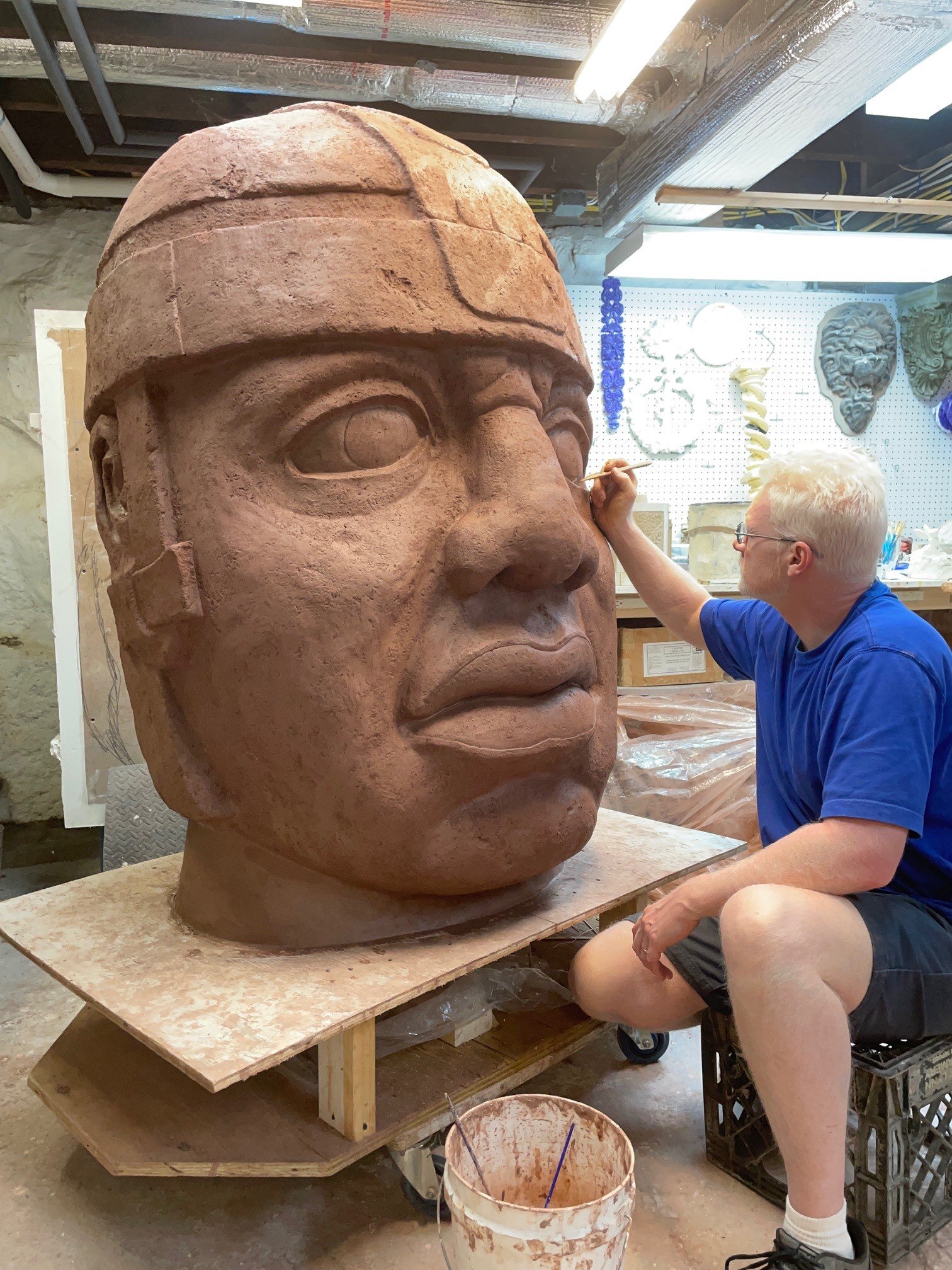
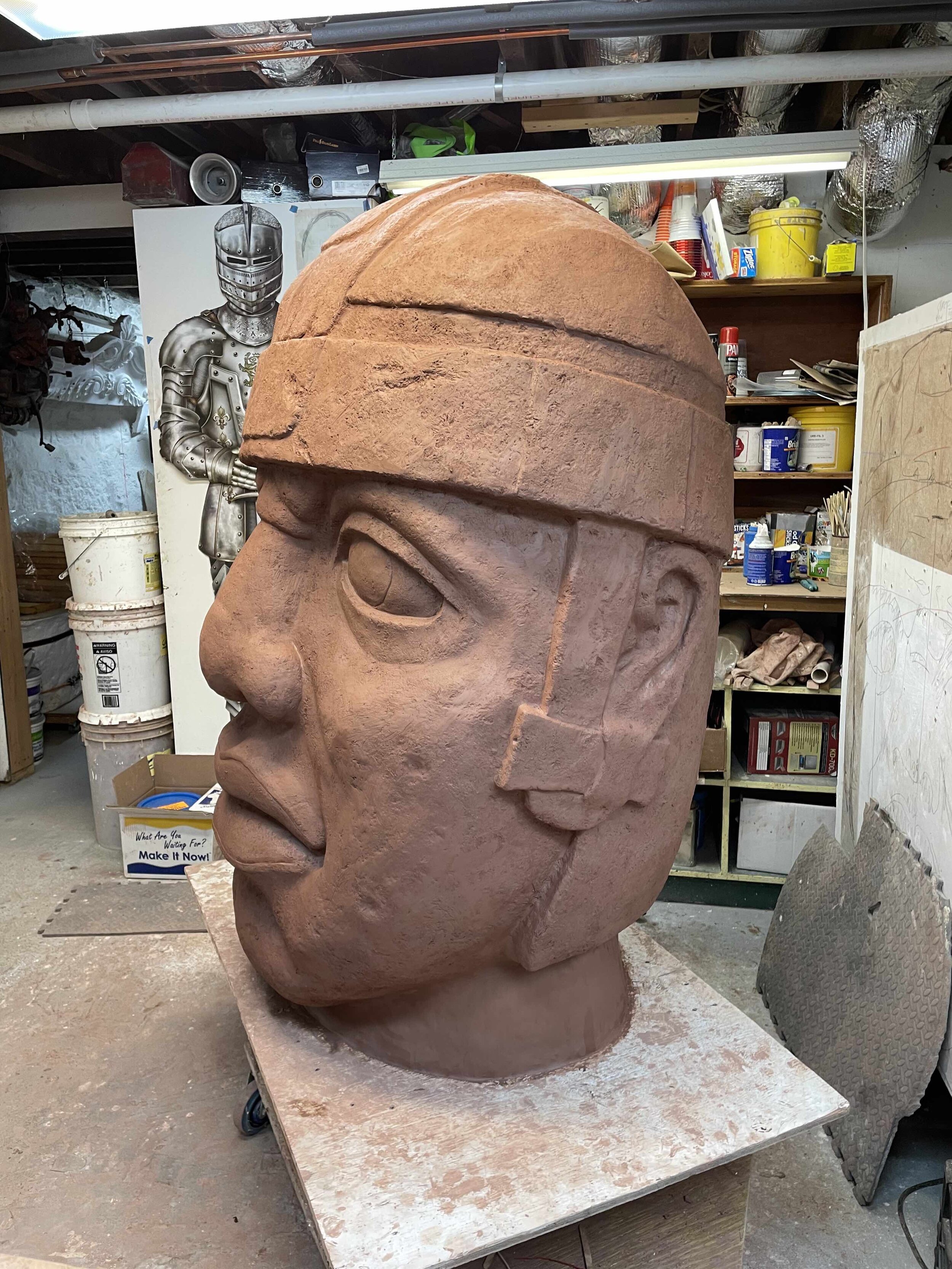
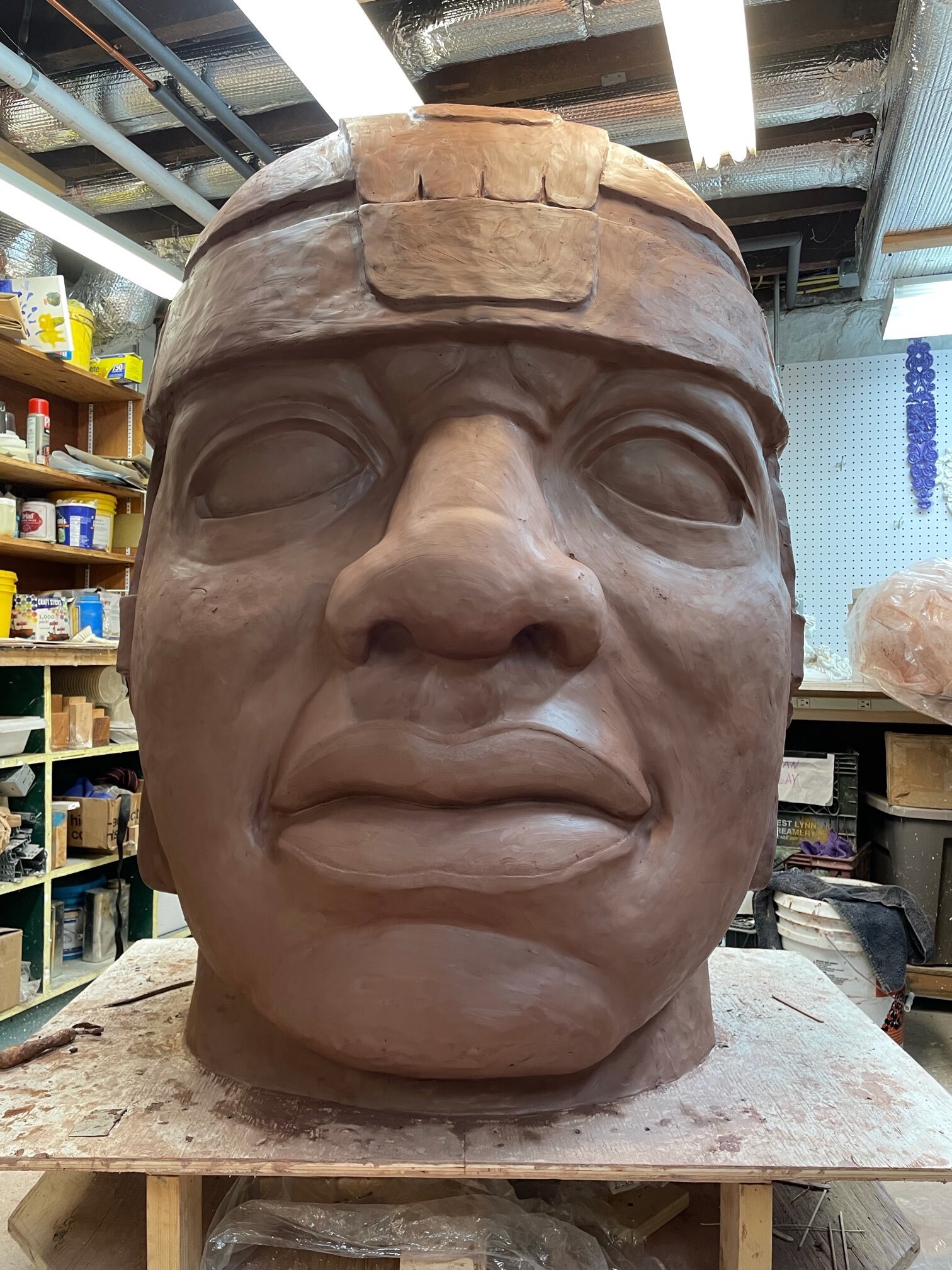
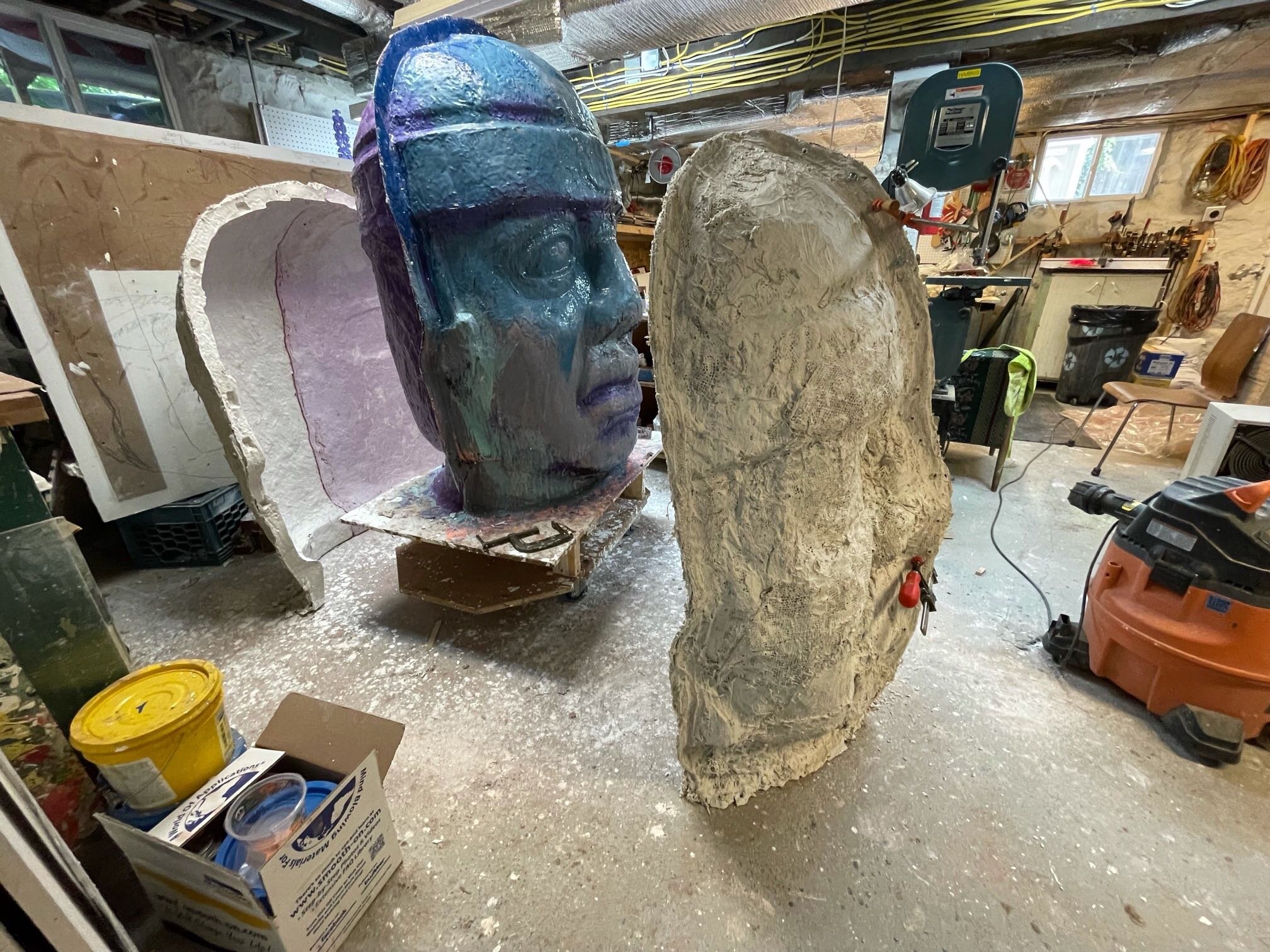
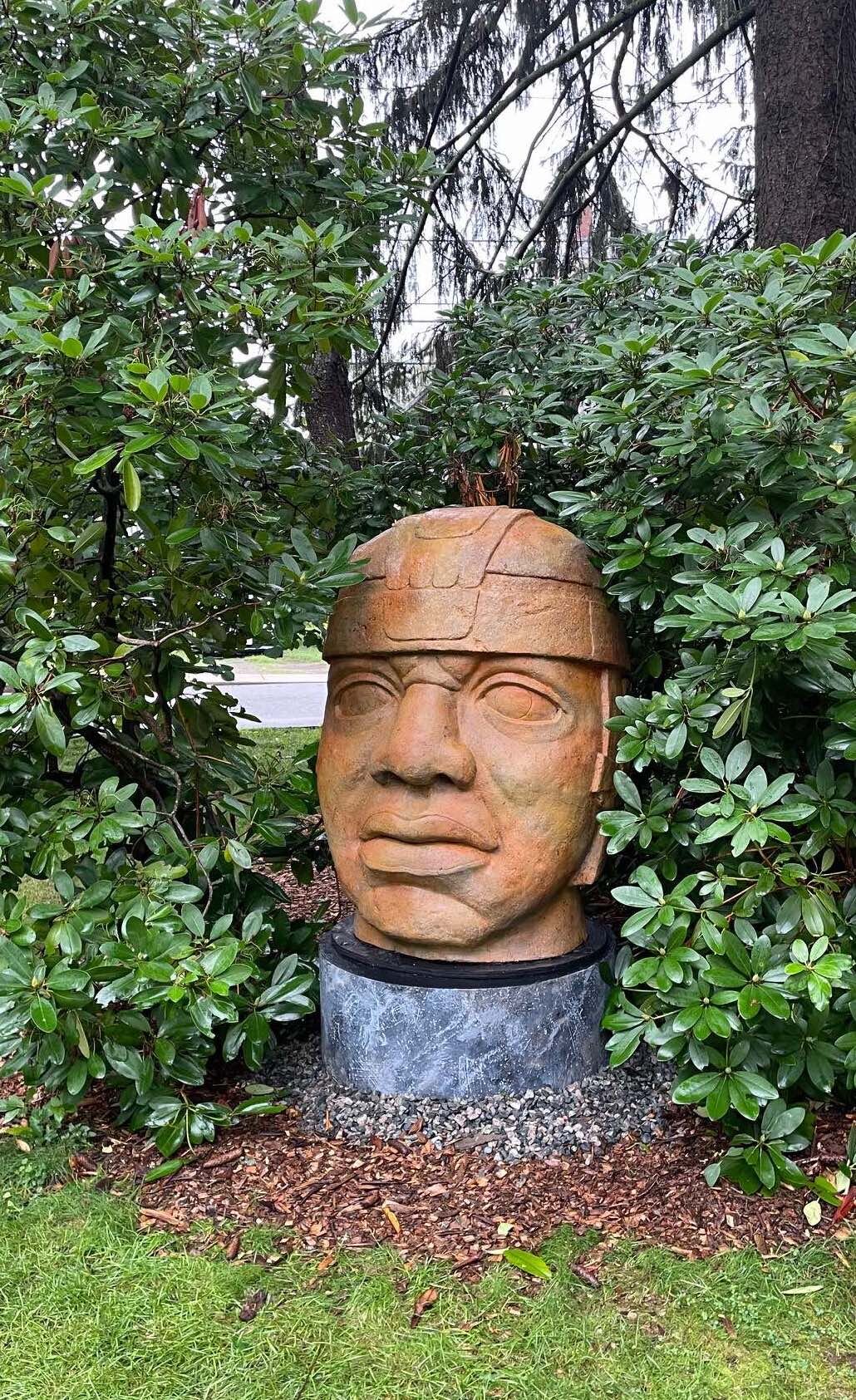
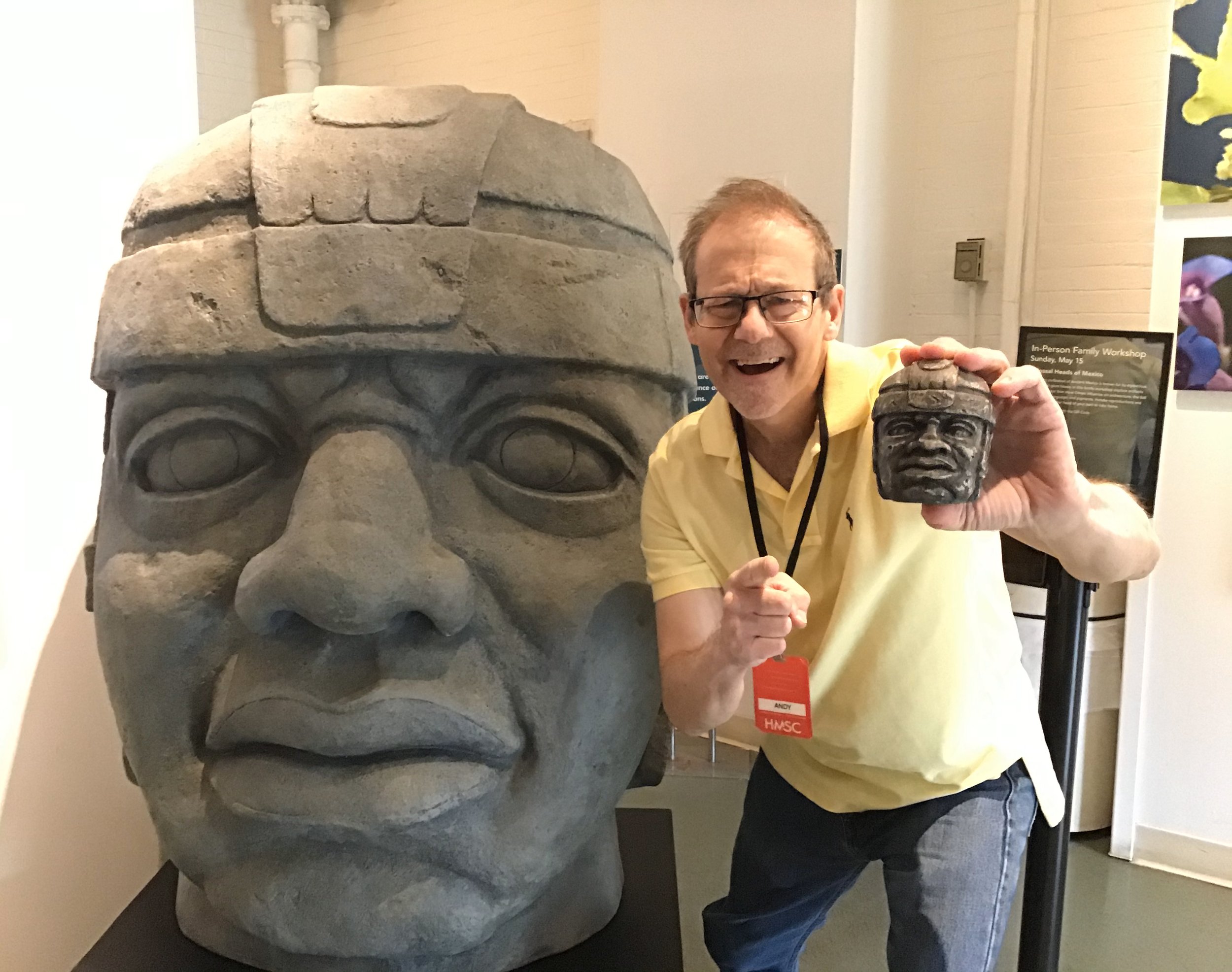
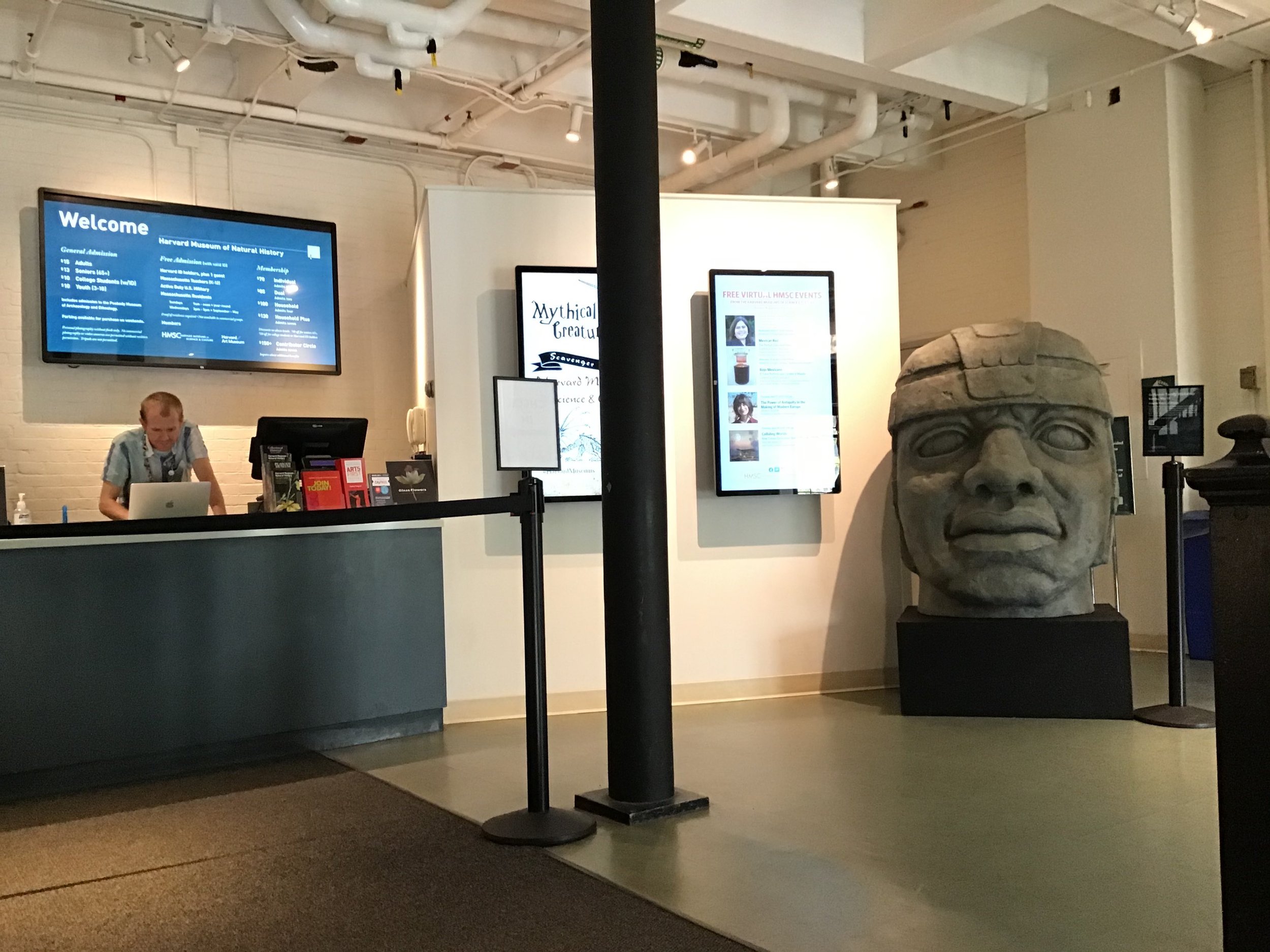
The Olmec were the first major civilization in Mexico. They are often called the “mother culture. ” They lived in the tropical lowlands on the Gulf of Mexico in the present-day Mexican states of Veracruz and Tabasco. Appearing around 1600 BCE, the Olmec were among the first Mesoamerican complex societies, and their culture influenced many later civilizations, like the Maya. Due to their early and complex cultural development, the Olmecs are considered among the great ancient universal civilizations such as Egypt, Mesopotamia, Greece, China, and India, civilizations that gave rise to today's nations around the world.
This is also a scaled down replica of the Colossal Olmec head, Monument 1: “The King”. (Etsy link)
I made the original 4” high model for a family workshop held at the Harvard University Museum of Archeology & Ethnology. The workshop celebrated the history and mystery of the Olmec people.
The 4” sculpture is cast in (GFRC) stone. This allows for the sculpture to be used in either an interior or exterior setting. Each casting is given a blue/gray stone patina to mimic the original basalt stone of the original carved sculpture. Each sculpture is hand painted, so a slight variation in color and pattern will very from the displayed photos. The sculpture weighs approximately 1lb.-12oz. As displayed in the photos historical information is inscribed on the back of the sculpture.
I also offer on Etsy a scaled down replica of the Colossal Olmec head, Monument 4: also known as
(San Lorenzo Monument 4) Etsy link
A brief history:
(San Lorenzo Monument 4)
The actual sculpture is currently located at Museo de Antropología de Xalapa, México.
The sculpture weighs 6 tons, and measures (5.8 ft) high x (3.8 ft) wide x (3.1 ft) deep. The head was discovered by Matthew Stirling in 1946, (600 yd) northwest of the principal mound, at the edge of a gully. When excavated, it was found to be lying on its right-hand side and in a very good state of preservation. The headdress (helmet) is decorated with a horizontal band formed of four sculpted cords. On the right-hand side, three tassels descend from the upper portion of the headdress; they terminate in a total of eight strips that hang down across the horizontal band. These tassels are judged to represent hair rather than cords. On the right hand side, two additional cords (hair braids) descend across the ear and continue to the base of the monument. On the left-hand side the helmet covers the ear and is decorated with three horizontal bands. The right side ear is visible; it is formed of a plain disc and peg. The face is that of an aging man with a creased forehead, low cheekbones and a prominent chin. The lips are thick and slightly parted. (Wikipedia)
The back of the sculpture has 26 circular depressions and three grooves that may have a ritual connection. The sculpture was carved using no iron tools from basalt stone.(Bostrom)

